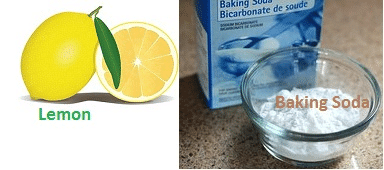Best Study Material for JEE Exam
JEE Exam > JEE Notes > Chemistry for JEE Main & Advanced > Acids, Bases and Salts
Acids, Bases and Salts | Chemistry for JEE Main & Advanced PDF Download
Introduction
You all know that lemon, tomato, oranges tastes sour. You also know that all of them contains citric acid. This is the best natural example to prove that acids are sour in taste.
On the other hand you all know that increased amount of baking soda makes the cake taste bitter. This is because baking soda is a base and hence tastes bitter.
When tested on a litmus paper acids turn the colour of the litmus to red whereas bases turns the colour of the litmus to blue.

Fig. lemon (acidic) and baking soda (basic)
The document Acids, Bases and Salts | Chemistry for JEE Main & Advanced is a part of the JEE Course Chemistry for JEE Main & Advanced.
All you need of JEE at this link: JEE
|
353 videos|600 docs|309 tests
|
FAQs on Acids, Bases and Salts - Chemistry for JEE Main & Advanced
| 1. What are acids and bases? |  |
| 2. How do acids and bases neutralize each other? |  |
Ans. Acids and bases neutralize each other through a chemical reaction called neutralization. In this reaction, the hydrogen ions from the acid combine with the hydroxide ions from the base to form water molecules. The remaining ions from the acid and base combine to form a salt. This reaction results in the pH of the solution becoming closer to 7, which is considered neutral.
| 3. What is the pH scale and how is it related to acids and bases? |  |
Ans. The pH scale is a measure of the acidity or alkalinity of a solution. It ranges from 0 to 14, with 7 being neutral. Solutions with a pH less than 7 are acidic, while solutions with a pH greater than 7 are basic or alkaline. The pH scale is logarithmic, meaning that each unit change in pH represents a tenfold change in acidity or alkalinity. Acids have a pH below 7, while bases have a pH above 7.
| 4. How are salts formed and what are their properties? |  |
Ans. Salts are formed when acids react with bases during a neutralization reaction. In this reaction, the hydrogen ions from the acid combine with the hydroxide ions from the base to form water, while the remaining ions from the acid and base combine to form a salt. Salts are typically solid crystals with high melting points. They are often soluble in water and can conduct electricity when dissolved or molten.
| 5. What are the common uses of acids, bases, and salts? |  |
Ans. Acids, bases, and salts have various practical applications. Acids such as sulfuric acid are used in car batteries and in the production of fertilizers, while citric acid is used in food and beverage industries. Bases like sodium hydroxide are used in soap and detergent manufacturing, as well as in drain cleaners. Salts, such as sodium chloride (table salt), are used in cooking and food preservation. They also play a crucial role in maintaining electrolyte balance in the human body.
Related Searches
































